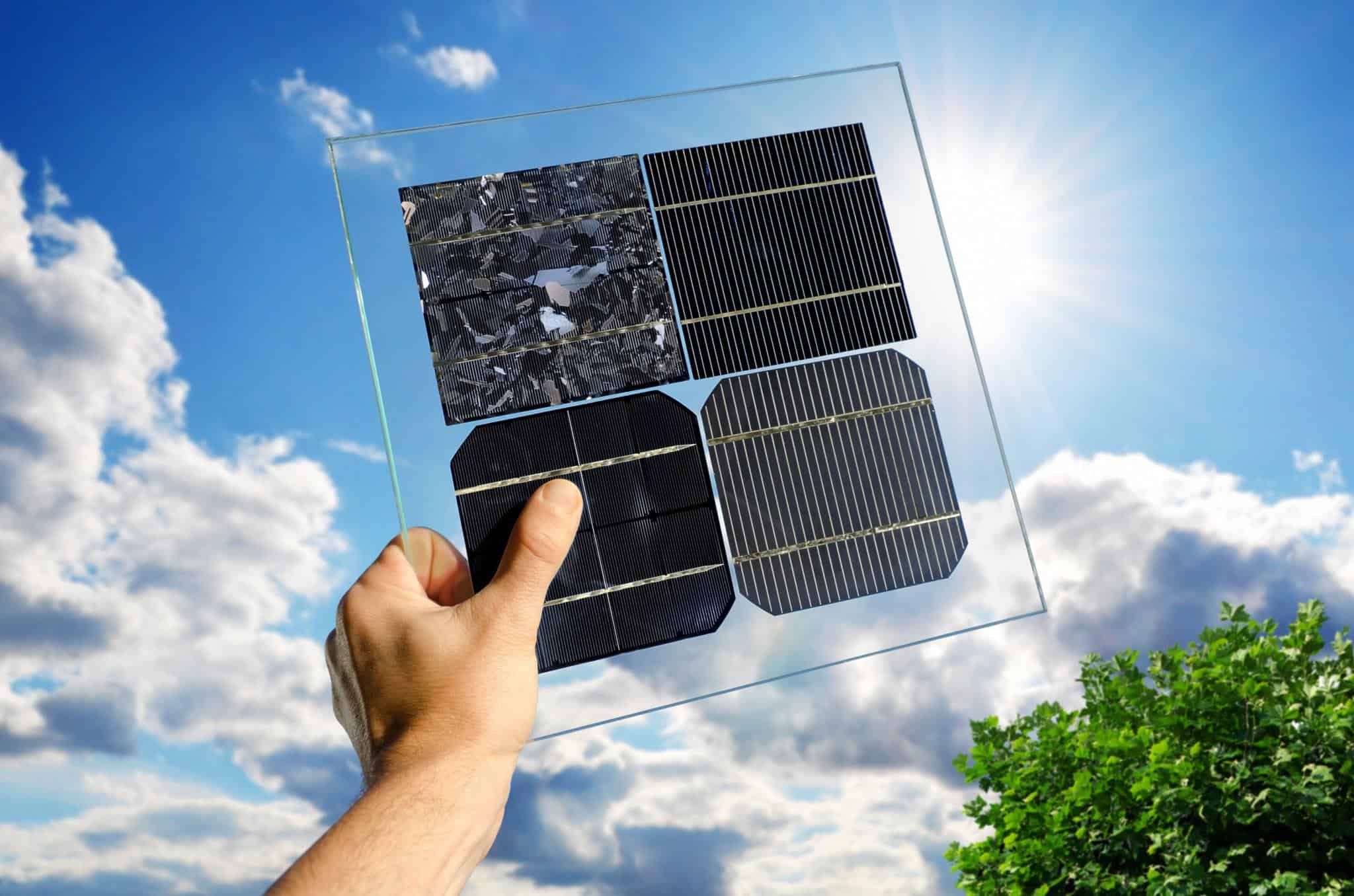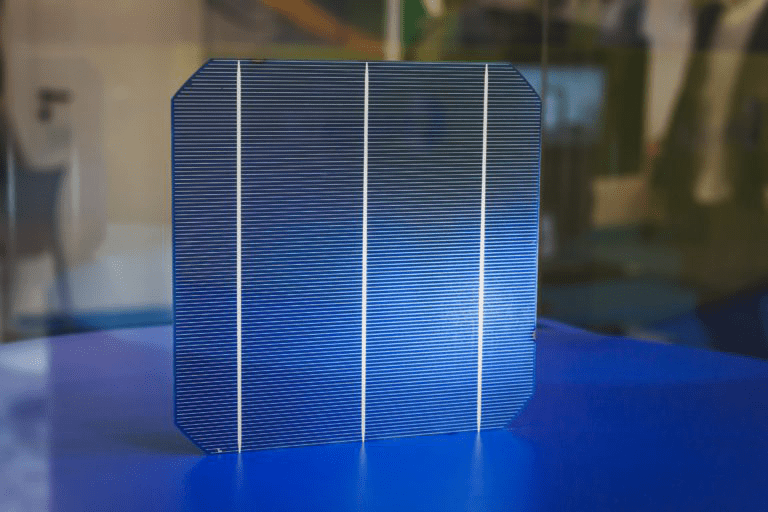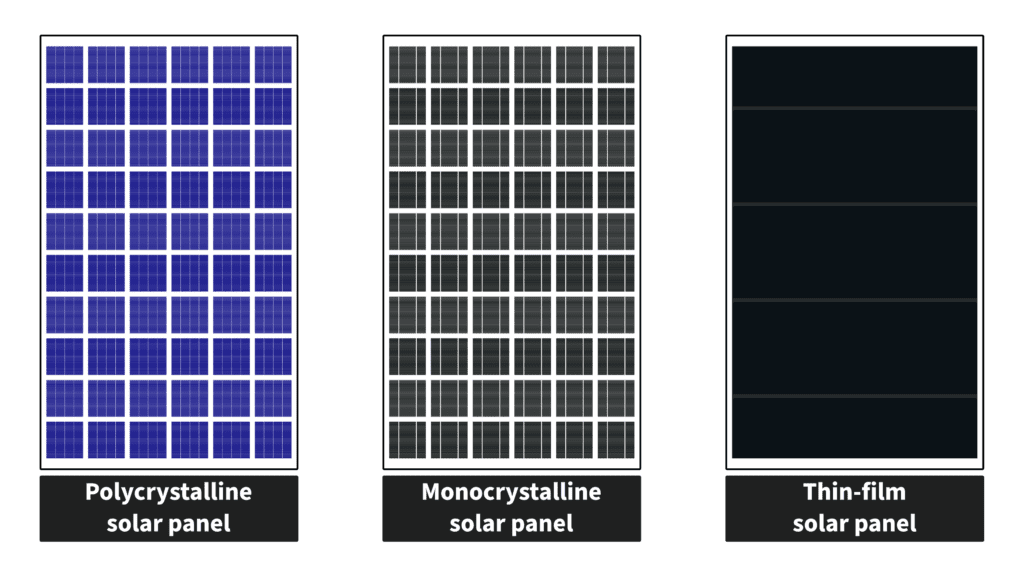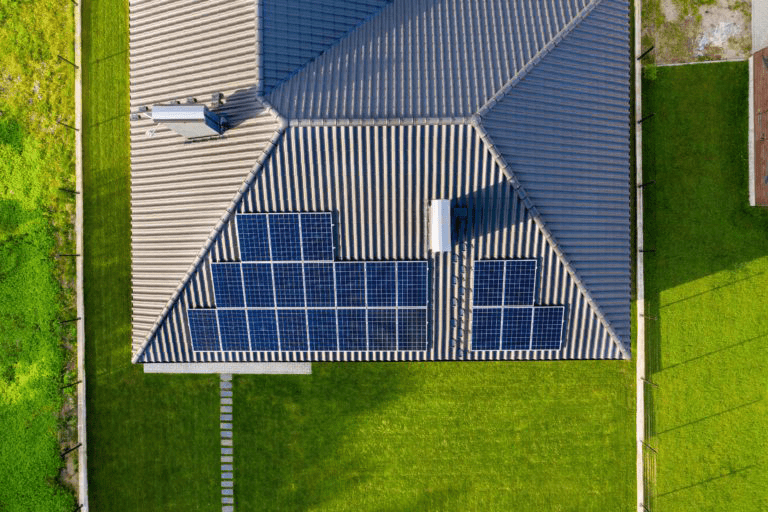
Your Guide to the Best Types of Solar Panels
If you’re looking at solar, one of the first things you probably started researching in addition to cost, is the different solar panel options. There are many options to choose from when it comes to the top solar panel brands. But did you know what factors actually make up the different types of solar panels? What makes up these differences has to do with the solar panel cells and how they’re created. Solar panels also vary by appearance, cost, performance, and installation.
What are the best types of solar panels?
When it comes to solar panel types, choosing the best depends on several factors such as the property where the installation will happen and the intended characteristics of the solar panel system. Each solar panel type has its own advantages and disadvantages so it helps to understand what they are so you can choose the best panel for your needs. Before we cover the three types of solar panels we will first learn what these different panels are made of.
What are different solar panels made of?
Approximately 95% of the types of solar panels sold on the market today are made up of silicon cells? Silicon is an abundant and natural material and luckily makes an excellent semiconductor. The two types of silicon solar cells are monocrystalline and polycrystalline. They follow a similar manufacturing process: melting quartz sand to form ingots before adding boron to produce a positive electrical polarity. Thin film solar panels are made from silicon but also other materials. Thin film panels are made by placing a thin layer of photovoltaic substance onto a solid surface. These panels are thin but depending on the materials and frame they can appear similar to the monocrystalline and polycrystalline solar panels.

What are the three main types of solar panels?
Monocrystalline
Monocrystalline solar panels are a popular option for many solar customers because they are not only powerful but look great on top of your home. The term mono, meaning “one”, was chosen because these cells are created from a single silicon crystal. Because of the way they are produced, they appear dark blue or black when light hits the panels,
- Best-Looking
- Efficient and Powerful
- High Quality
Monocrystalline panels are considered the more attractive option for rooftop installation because they blend in more easily with composition shingles. Monocrystalline panels are visually appealing because of their dark panel color and they can have variety in colors for their frames and back sheets. Solar panels weren’t as common on residential properties until about a decade ago. Homeowners used to be worried their home’s aesthetic would be negatively affected by the appearance of solar panels. Alternative solar installation locations, like ground mounts and solar carports, can be good options for those who are still concerned about installing panels in their home. Monocrystalline panels are also popular because they have the highest power capacity. With a single-crystal build that allows higher output in a small package these panels generate lots of solar power.

Polycrystalline
The main difference between the two types of silicon solar panels is how they undergo the manufacturing process. Unlike monocrystalline, polycrystalline cells are composed of multiple silicon cells being melted together. This gives them their reflective blue tint, which can be seen in most of the panels sold on the market today. The manufacturing process also uses a lot less energy and produces less waste overall.
Because most solar shoppers are more concerned with price and affordability rather than how good their panels will look on their roof, many still opt for polycrystalline panels. However, another factor solar shoppers should be considering is how long their solar panels will last. There are many positives to choosing these panels for your solar project, including high overall value. While polycrystalline panels are less expensive they are also less efficient than the monocrystalline panels. Homeowners will larger properties can save on costs upfront with this alternative. Although less expense the polycrystalline panels are a great alternative with efficiency for these panels ranging from 15-17%. Another factor to consider is that if you live in a hot temperature climates polycrystalline solar panels would not be recommended.
- Affordable
- Eco-Friendly
- Durable
Thin-Film
Although they aren’t currently used in residential installation, let’s quickly cover thin-film solar cells. They were first invented in the 1970s, nearly two decades after silicon cells. And they are commonly referred to as “second-generation” solar. Thin-film solar is mostly used in commercial applications and EV chargers. It was estimated that thin-film solar panels would dominate the market after they were first invented. Unfortunately, there haven’t been many technological advancements that have driven significant cost or efficiency improvements. Consequently, the thin-film market share has steadily been declining in the past decade. There are a variety of thin film solar panels depending on the materials they are made from. These panels are easy to install and can be manufactured in various sizes however, the efficiency for these panels is low.

Solar Panel Efficiency
Solar efficiency is the panel’s ability to minimize loss while converting the sun’s energy into electricity. It is synonymous with panel quality and can play a huge factor in price. It is measured through a percentage called an efficiency rating. Efficiency ratings are defined as “the ratio of energy output from the solar cell to input energy from the sun” (Solar Cell Efficiency | PVEducation).
The reason efficiency is such an important factor when choosing the right panel is because the higher the efficiency, the more money you can save with solar. The more electricity your solar system produces to power your home, the lower your electric bills will be. Using high efficiency solar panels is necessary to power your home if you are conscious of space for solar panel installation. Therefore, efficiency is an important factor for those homeowners with smaller roof space for solar panels. Solar Negotiators offers a free quote and articles to help you to start learning which types of solar panels are the best for your needs.
Monocrystalline solar panels have the highest efficiency ratings of any solar panel type. Their high performance makes them a fantastic choice for any solar shopper to consider for their home installation.

The most well-known brand of monocrystalline solar panels is Sunpower. Their efficiency ratings are top of the market, averaging between 20 and 22 percent. Solar shoppers often include Sunpower panels in their options when getting quotes. However, because they are considered one of the best panels on the market, they come at a high cost.
Solar Panel Cost Variations
The process of creating solar cells from one large piece of silicon is much more involved, leading to higher production costs. Because of this, most solar companies sold strictly polysilicon panels until the early 2000s. However, due to advances in technology, the cost of solar panels has come down nearly 80% in the last 20 years.
If you’re interested in value over quality, you may opt for polycrystalline solar panels. Even though they are not as efficient as monocrystalline panels, poly panels offer tremendous cost savings.
Depending on your energy-saving goals, you may have decided on a particular type of solar panel already. However, if you’d like to get pricing to compare these panel options yourself, contact our team for a free solar quote. We offer easy financing options to help our customers gain solar success. Solar Negotiators have the most panel choices, so you don’t have to limit your options.

Recent Posts
Latest Solar Tax Credit News: Bill Signed To Eliminate 30% Solar Tax Credit
Solar Tariffs – Are They Here To Stay?
Solar Backup Solutions: How Do Solar Batteries Work?
Reduce your reliance on the energy grid.
Get Solar In
Your Inbox

Refer friends and get paid in-app
The more referrals you bring in, the higher your earnings.
Earn $1,000 for each referral, and bonuses of up to $1,500 once you hit your 10th referral.




